When and how to plant a fir tree correctly?
When landscaping a site, it is difficult to do without conifers. Spruce is considered one of the most popular. But this is not always the usual 30-meter beauty. Some grow only up to 20 cm in their entire life.
Content:
- Features of the structure of the spruce
- Reproduction methods
- The best spruce varieties to grow
- Planting and caring for a tree
- Possible growing problems
- The use of spruce in landscape design
Features of the structure of the spruce
About fifty species of this plant are now known. They combine 150 forms, each of which has several varieties. Homeland ate China and North America. About a hundred forms are grown on our territory. Most spruce species have straight trunks covered with brown bark. With age, it becomes rough. The branches are arranged in tiers.
The main difference between fir trees and other evergreens is the appearance and location of the needles.
It can be flat or square. The needles are arranged spirally on the shoots. The color ranges from yellow-green to gray-green, which is called blue.
Flowers are divided into male and female. Male ones are smaller in size, grow from the sinuses of the upper needles. Ladies are formed at the ends of old branches. Cones are formed from them. At first they are green, reddish, or tinged with purple. After ripening, the cone scales acquire a brown or grayish color. Ripen for winter. They do not hold on to the branches, they fall off.
Reproduction methods
Ate is grown:
- From seeds.
- By cuttings.
How to properly grow esl from seeds:
- When grown from seed, only this year's buds are used. You can extend the germination period by hiding the seeds in an airtight package. If stored at temperatures from 0 to 5 degrees, they can be used for reproduction up to 15 years. Germinate seeds in several ways.
- Sow before winter to a depth of 2 cm, mulch on top with a layer of peat 1.5 cm high. In the spring, dense shoots dive to a new place. Some of the seedlings can be left without transplanting. They are transplanted to a permanent place in the fall or next spring. You can sow in special boxes, then take them out into the snow. There the seeds will pass stratification.
- This process can be carried out in a refrigerator or basement. The seeds are mixed with washed sand and kept at a temperature of about 4 ° C for 1-3 months. Then sow and set in a warm place. If it is possible to place dishes with seeds in a cold place, they are sown immediately in small containers.
- Seedlings are kept in a bright place, but not in hot sunlight. Thickened plantings thin out, diving seedlings in a separate bowl.
The disadvantage of this method of reproduction is that maternal properties are poorly transferred. Only a small amount retains the characteristic features. When growing blue spruces, a large number of seedlings are planted. After a few years, it will become clear which of them has a blue needle color.
It is easier to propagate young varietal spruces by cuttings.
Good results are obtained by growing Canadian or black spruce in this way. For cultivation, choose the type of branches that corresponds to the type of tree. In columnar cuttings, vertical cuttings are cut, in drooping ones - inclined. For reproduction spherical take any branches.
Installed in a light substrate with an admixture of vermiculite, sphagnum moss, sand. Maintain at a temperature of 18 ° C. After germination, it is raised to 25 ° C. Maintain high humidity.
Spruce can be grown from horizontal layers, but the crown of a new tree usually comes out crooked. You can use this method to grow varieties with drooping crown. But buried branches grow from 2 to 5 years.
The best spruce varieties to grow
An ordinary 50 meters high prefers slightly acidic sandy loam. Dislikes stagnant water. Her decorative forms:
- A compact with a rounded shape with a height of 2 meters.
- Echiniformis 20 cm high can have needles of different colors, from yellowish to gray.
- Nidiformis with a nest-shaped crown.
- Akrokona with red bumps. Frost-resistant variety. Transfers the shadow. Dies from stagnant water.
- Inversa is a very beautiful tree with a drooping crown.
- Maxwellii is cushion-shaped. Height is about a meter. Needles with a yellow tint.
Thorny spruce in 100 years grows up to 45 m, in urban conditions up to 20 m. Thorny needles, the color can be from green to silver. Growing in the city, it needs to be washed three times during the summer with water, washing away dust and dirt. Forms:
- Argenta with yellow needles. Tolerates drought and frost.
- Glauca with blue needles with a gray tint. Winter hardy, drought tolerant. Loves light areas.
- Hoopsii is the bluest of the spruce trees. It grows up to 10 m. The branches are strong. Loves sunny areas.
Canadian spruce is distinguished by light needles. The bark is gray. The crown has the form of a cone, height 25 m.Lives up to 500 years. Young branches grow upwards, old ones grow downwards. Forms:
- Konica up to 1.5 m high.
- Albert Blue.
- Ehiniformis 50 cm high.
Serbian spruce with a narrow pyramidal crown. The branches grow upward. The needles are dark on top, white stripes are visible on each needle below. The spruce is decorated with dark purple cones. Does not tolerate stagnant moisture in the soil. Frost resistant. Varieties:
- Minimum height 30cm, width half a meter. The needles are hard, the top is green, the bottom is blue. Loves light soils.
- Nana is a popular variety with a round crown. It grows by 2 cm per year. It tolerates frost well.
- Pendula with a columnar crown, branches hanging down. Two-color needles.
Eastern spruce can reach a height of 60 meters. The trunk is powerful, up to 2 m. The needles are short, up to 8 mm, flattened, tetrahedral. The needles are yellow at first. They darken over the years. Transferring shading. Doesn't like frost. Varieties:
- Aureospicata with asymmetrical branches drooping downward. The needles are 8 mm long. First golden, later darken. Cones are cylindrical, up to 8 cm long. The color is purple. It should be planted in a place sheltered from northern winds. The crown can be formed by cutting.
- Bergman Gem up to half a meter high. First, the crown is elongated, then it becomes round. Suffers blackout.
- Skylands grows up to 11 m. Golden needles.
Ayan spruce - low, up to 9 m, tree. The needles are flat, 1.2 to 2 cm long and 1.2 mm thick, keeled. The twigs have a tousled appearance. The top of the needle is dark, the bottom has light stripes, due to which the tree acquires a silvery hue. Cones are loose, red or green before ripening. Differs in high frost resistance. Popular varieties:
- Nana Kalous (Marianske Lazne) is a small plant with a rounded crown. The needles are silvery. Differs in high frost resistance.
- Mariana (black). Cones are dark purple, brown when mature.
Planting and caring for a tree
With all the variety of species and varieties of spruce, there are general requirements for growing conditions. Choose a place that suits the given type. Most often it should be sunny and protected from northerly winds. The spruce root is located in the surface layers of the soil. Therefore, he is not able to hold tall trees under the influence of strong gusts of wind.
The amount of sunlight usually affects the color of the needles. If it is not enough, the blue needles turn green, and the crown takes on a shape that is not characteristic of the variety. The soil on the site should be light and fertile.This does not apply to dwarf forms, which, under the influence of a large amount of nutrients, can change the shape of the crown. Acidity pH 4.5-5.
Young spruces are planted in early spring, before bud break, or in autumn.
During the growing season, trees are poorly accepted. Do not allow the root system to be in the air for more than 10 minutes. It is advisable not to allow deepening of the root collar. This can lead to decay. If it is too high, the tree will dry out. Most varieties of spruce tolerate drought well, but varietal plants need to be watered, not allowing anyone to dry out. The trees shade in the first months. They loosen the soil around the trunk to a depth of 5 cm. Young spruce growths can freeze slightly in winter. But over the summer they grow back. To prevent the plant from losing its crown shape under the snow, plants with several trunks are pulled together with twine and fixed to a support.
It is more difficult to protect creeping spruce varieties from getting wet. During the thaw, the snow melts and moisture collects under the bush. To prevent the branches from disappearing, at the beginning of winter they are laid on special trellises. An adult spruce does not need additional feeding. Complex mineral fertilizers for conifers are applied under young trees in spring, immediately after the snow cover melts. Fresh manure must not be applied.
Ate can be transplanted to a new location. This is done in early spring or autumn. Young trees tolerate the procedure more easily. You just need to regularly water the plants and spray them until the time it takes root. One-year-old seedlings need watering up to 7 times a day. Seniors water 2 times a day. Mature trees are moistened once a week with a bucket of warm water.
Before replanting large trees for a year or six months, they begin to prepare its root system. To do this, they dig in the tree around several times, cutting the roots. Tighten the circle diameter gradually. As a result, a clod of earth in the area of the roots becomes dense and does not disintegrate during transplantation.
Possible growing problems
Ate can be affected by fungal diseases:
- Shütte is manifested by reddening of the needles. After a while, it darkens.
- Tracheomycotic wilting is a viral disease that affects the root system. The needles turn red and crumble.
- Rust of needles and cones. Yellow bubbles appear on them.
- Cortical necrosis leads to the formation of outgrowths. Leads to the death of the spruce.
- Ulcerative cancer leads to the formation of resinous wounds.
You need to fight by cleaning and removing damaged areas. Treat wounds with garden pitch. In the spring, for the prevention of diseases, they are treated with preparations containing copper.
The main pests ate:
- Weevil, kidney sawfly, spider mite damage the needles.
- Goldfish, borer, bark beetle, grinder affects the bark.
- Leafworm, gall midge, seed-eater spoil the cones.
Processed 3 times insecticides.
The use of spruce in landscape design
Spruce is often used to create a variety of compositions. It is decorative all year round, and the use of varieties with different colors of needles and crown shapes allows you to create beautiful and original compositions. Spruce and prickly spruce are preferred because they are resistant to frost and weather conditions. Various ornamental species of common spruce are planted in northern gardens and parks. Barbed is planted near public buildings.
Alleys are created from trees with a pyramidal crown, several pieces are planted to separate the park zones.
Compositions of firs with variegated bushes, perennial ornamental plants look good. Suitable ate for creation hedges... They can be trimmed to give the trees a variety of shapes. To do this, use the varieties of gray spruce Fat Albert or Hoopsii. It is easy to create a beautiful hedge out of them with a little pruning. But these ate dear ones. Therefore, you can use ordinary spruce, which also tolerates pruning well.
To form a hedge, young vertical shoots are pruned in early June by a third of the length, and the side branches are shortened by half or two-thirds of the length. As a result, the twigs grow denser, the bush becomes denser. Such operations take 4 years. Then the bushes close up. Further pruning is carried out in early March, and young growths are sheared in late May and early June.
Low forms, spherical, dwarf pyramidal planted in rock gardens, rockeries, mixborders... They give the plots an elegant look all year round. They are used to create bonsai. Creeping varieties are grafted onto trunks. You can change the shape of the crown by pinching in the fall and shortening the central buds of the lateral shoots in the summer.
More information can be found in the video:






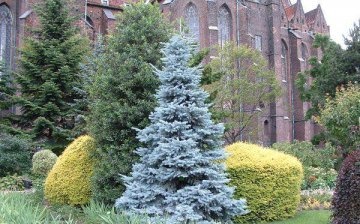
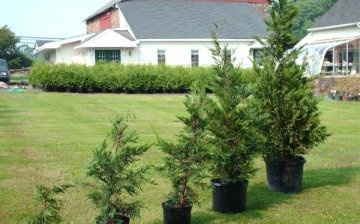
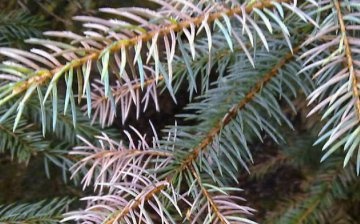
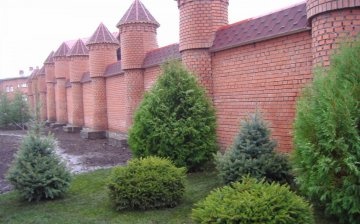







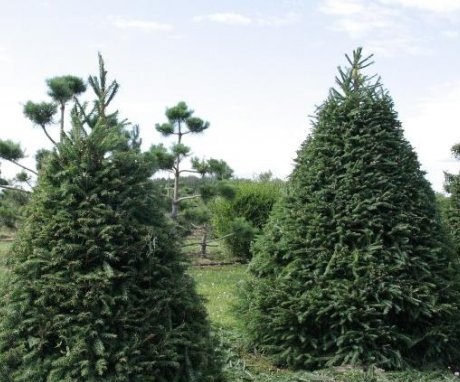


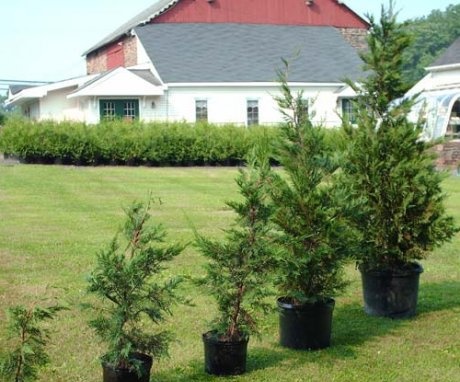
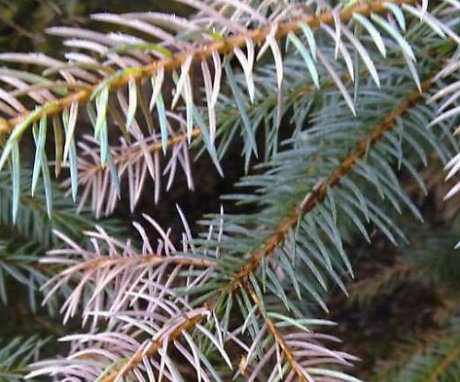
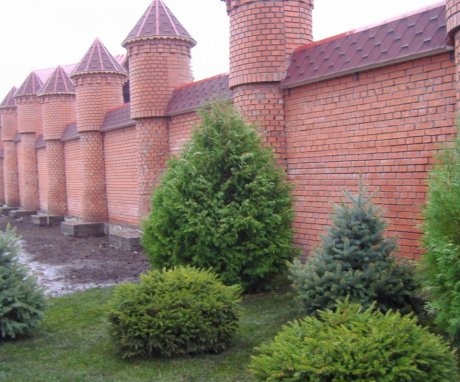
Spruce is a very beautiful and tall tree; many people plant it in the front garden in front of the house. Of course, the spruce grows very slowly and it will be admired mainly by grandchildren. We tried to replant an adult tree from the building of the house, but it was not possible to save it and the spruce dried up.
We tried to plant spruces near the site, but abandoned this idea, since they do not take root here. Dry, wither, freeze. They are too demanding. So they planted birches.
I like Christmas trees on the site, but they do not take root, they grow very slowly and eventually die. And to grow a spruce from seeds, it seems to me, is generally unrealistic. I still want to try it one more time, but I really don't believe it will work out.
But me, somehow, on the contrary, contrary to the opinion of previous authors, spruce trees take root perfectly and grow at some rapid pace, so that in fact every year you have to cut it, so that later the whole area would not be covered with its shadow. At the same time, I don't do anything special with them.